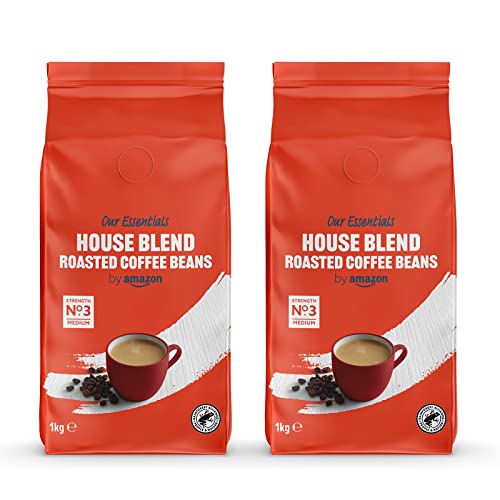Which Coffee Beans Are the Best?
The type of beans that you select will make the difference when it comes to creating a delicious cup. Each has a distinct flavor that is perfect for a variety of drinks and food recipes.
Panama is the top contender in the world of rare Geisha beans. These beans are highly assessed in cupping tests and they are also expensive at auction. Ethiopia, and especially Yirgacheffe, isn't far behind.
1. Geisha Beans from Panama
If you're searching for the finest coffee beans in the world look no further than Geisha beans from Panama. Geisha beans are prized for their distinctive aroma and flavor. These rare beans, grown at high altitudes, undergo an exclusive process that gives them their signature flavor. The result is a cup with a smooth, rich flavor.
Geisha coffee is native to Ethiopia but was introduced to Panama for the first time in 1963. Geisha coffee has been known to win competitions with its prestigious taste and flavor. Geisha beans are also expensive due to the labor involved in their cultivation. The Geisha coffee plant is more difficult to cultivate than other coffee plants, because it requires higher elevations and unique climate conditions.
Geisha beans must also be handled with care because they are delicate. They need to be meticulously sorted and meticulously prepared prior to roasting. They can turn acidic or bitter if prepared properly.
The Janson Coffee Farm is located in Volcan. The farm is committed to protecting the environment, and specializes in high-quality production. They use solar panels for energy, reuse waste materials and water, and use enzyme microbes to improve soil. They also reforest the area and reuse water to wash. The coffee they produce is a Washed Geisha and was awarded the highest score at the Panama Coffee Competition.
2. Ethiopian Coffee
Ethiopia is a giant in the field of coffee with a long tradition of producing the best coffees in the world. Ethiopia is the 5th largest producer of coffee in the world. The beans are highly appreciated for their distinctive fresh, fruity and floral flavors. Unlike many other beans, Ethiopians taste their best when they are roasted to a medium roast. This lets the floral notes be preserved while highlighting citrus and fruity flavors.
Sidamo beans, which are famous for their crisp acidity and crisp acidity, are among the top in the world. However, other varieties of coffee, such as Yirgacheffe or Harar are equally well-respected. Harar is the most well-known and oldest variety. It has a distinctive mocha and wine flavor. Coffees from the Guji region are also renowned for their distinctive flavors and distinct terroir.
Natural Process is another kind of Ethiopian coffee that is processed using dry processing instead of wet processing. The difference between the two methods is that wet-processing involves washing coffee beans, which can remove some fruity and sweet flavor of the beans. Up until recently, natural process coffees from Ethiopia were not as popular as their washed counterparts. They were often used to enhance blends rather than sold as a singular-origin product on the specialty market. However, recent technological advancements have allowed for better quality natural Ethiopians.
3. Brazilian Coffee
Brazilian Coffee is a rich mix of various types. coffee beans bristol is described as having an acidity that is low. It has a sweet taste with subtle cocoa. The flavors may vary based on the region and state in which it is produced. It is also renowned for its nutty and citrus notes. It is a great choice for those who like medium-bodied coffee.

Brazil is the world's biggest coffee producer and exporter. The country produces more than 30% of the world's coffee beans. It is a major agricultural industry, and Brazil's economy is heavily dependent on it. The climate is perfect for growing coffee in the country There are fourteen major regions that produce coffee.
Catuai beans, Mundo Novo beans, Obata beans, and Icatu are the primary beans used in Brazilian coffee. All of these are varieties of Arabica. There are several hybrids that contain Robusta. Robusta is a type of coffee bean that originated in Sub-Saharan Africa. It's not as delicious as Arabica coffee, however it is easier to cultivate and harvest.
It is important to be aware that slavery is a problem in the coffee sector. Slaves are subjected in Brazil to exhausting and long work hours, and are often denied adequate housing. The government has taken steps to tackle this issue by establishing programs to help farmers with their debts.
4. Indonesian Coffee
The top coffee beans of Indonesia are known for their dark, strong flavor and earthy flavor. Volcanic ash in the soil gives them a earthy taste and a robust body. They are excellent for mixing with beans from Central America or East Africa which have a higher acidity. They also adapt well to darker roasting. Indonesian coffees are rustic and complex in taste, with notes of wood, leather tobacco, and ripe fruit.
Java and Sumatra are the two major coffee producing regions in Indonesia but some coffee is also produced on Sulawesi and Bali. Many farms in these areas utilize a wet hulling technique. This is different from the washed method of processing which is typical in most of the world, where the coffee cherries are de-pulped and then washed before drying. The hulling reduces the amount water that is present in the coffee, which can reduce the effect of rain on the final product.
One of the most sought-after and high-quality varieties of Indonesian coffee is Mandheling, which comes from the Toraja region. It is a full-bodied coffee with hints of candied fruits and a smoky taste of chocolate. Other varieties of coffee from the region include Gayo and Lintong. They are usually wet hulled and have a strong and smoky flavor.
